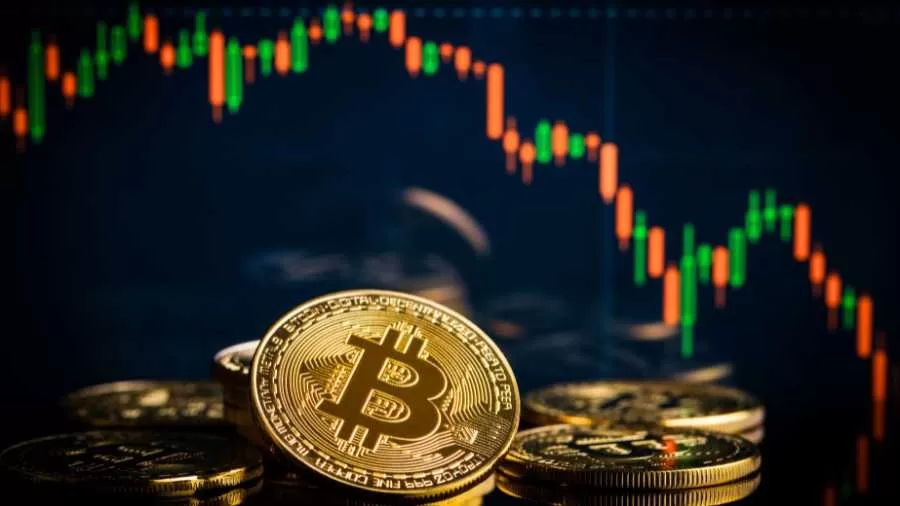Reading the Market’s Mind: How Bitcoin Heatmaps Reveal Real-Time Psychology

Every passing second in crypto trading is fueled by thousands of traders’ behavior and emotions. Patterns, visuals, and technical indicators guide analysts and traders to make sense of these movements. Among such tools is the bitcoin heatmap which has increasingly become popular over time. These heatmaps are not only visually striking but are robust tools that offer insight into how the crowd psychology of the market is changing, every moment.
1. Learning What a Heatmap Actually Represents: A heatmap is a graphical representation of data in which different values are represented through colors. For Bitcoin trading, heatmaps often present order book data and emphasize buy and sell walls and liquidity areas. With this, the traders can easily identify spots where strong support or resistance is most likely to happen. But aside from figures, these patterns also depict human behavior, fear, greed, doubt, and momentum.
2. The Connection Between Order Placement and Trader Emotion: All trades start with a thought process—hope of gain or fear of loss. When large volumes of traders expect a price movement, they tend to stack their buy or sell orders around certain price levels. A heatmap displays these clusters as bright areas, representing heavy trader interest. In real life, this indicates where the crowd is anticipating the market to respond, giving us a glimpse into the psychological comfort zones of the masses.
3. How Market Sentiment Manifests Visually: In market sentiment analysis, it is measured through surveys or media stories. Heatmaps, on the other hand, provide real-time data-driven insight into sentiment. If big sell walls start forming repeatedly at specific levels, it’s not merely a technical indicator—it indicates hesitation, fear of loss, or anticipation of a fall. Buy walls indicate hope, support, and expectation of price reversal. These are psychological indicators painted on the chart in real time.
4. Responding to Pressure Zones Prior to Price Movement: Veteran traders recognize that the market does not always react to fundamentals in real time. Prices tend to linger close to major liquidity zones due to trader uncertainty or manipulation. If a heatmap indicates persistent liquidity at a specific level, it is typically indicative of a pending breakout or reversal. These areas turn into psychological war zones, and being able to identify them allows traders to prepare prior to a change, rather than reacting afterward.
5. Visual Cues That Tell a Deeper Story: Bright green or red blotches on a heatmap may appear like mere technical indications, but they are an emotional tale. Large orders put in by traders at a particular level may be institutions attempting to provoke retail responses, or smaller players clustering together in collective conviction. Be it fear of losing or fear of missing out, these behaviors create identifiable visual imprints, and heatmaps are the canvas of that emotional tale.
6. Unraveling Concealed Market Intentions: Some of the subtletest elements of trader psychology are not due to easy patterns, but due to abrupt changes. A firm buy wall that is suddenly removed, or a sell wall that magically expands, may indicate changing intentions. It could be a sign of manipulation, fear, or second thoughts. Observing these changes in real-time allows traders to anticipate the crowd by feeling when the mood of the market shifts before it becomes apparent.
7. Emotional Peaks Amid Volatility Peaks: In times of extreme market action, like unexpected breakouts or crashes, heatmaps are particularly precious. Panic, urgency, and primal emotion characterize these times. Heatmaps show where traders are scrambling to get in or out. The turmoil is organized into distinct areas of liquidity. These areas assist in locating emotional extremes—where traders make irrational decisions and opportunities exist for those who remain level-headed and vigilant.
8. Reading Deception in the Market: Not every signal on a heatmap is real. Large orders are sometimes executed with the aim of deceiving other traders—a practice called spoofing. This is when psychology is employed and manipulated. Identifying fake walls and understanding where heatmap data does not match volume or price action is a proficiency that sets the mediocre trader apart from the keen observer. It is a reminder that markets are as much about perception as they are about fact.
9. Building Intuition from Heatmap Observation: With practice over time, regular observation of heatmaps builds a form of trading intuition. It is not a matter of forecasting specific prices but of knowing behavior. You can feel when a wall will break or when a zone will hold. This is not necessarily a chart skill—it’s a people skill, a pattern recognition of mass belief and emotion as it constructs in real-time in the market.
10. Recognizing Confidence and Uncertainty in Real-Time: Confidence in the market is represented on heatmaps as stability. When orders remain unwavering and don’t change rapidly, it indicates traders are confident. Conversely, changing levels quickly added and canceled orders, and vanishing walls indicate uncertainty. These graphical signs capture confidence and uncertainty, not in an averaged sense, but with accurate timing that informs traders whether the masses are confident or unsteady.
11. Recognizing Herd Mentality Before It Peaks: The most potent application of a heatmap is observing herd action in the process of being made. When a single level of price begins to attract ever-increasing orders, it generally indicates the crowd is rallying around a perception. That perception could become a self-fulfilling prophecy or crater on the eve of realization. To be able to spot such mass momentum early gives a trader the ability to ride the wave instead of chasing it late.
12. From Static Charts to Dynamic Psychology: Old charts reveal what has transpired. Heatmaps reveal what traders are set to do next. This change of attitude—from past motion to future intent—makes heatmaps revolutionary in our comprehension of trading behavior. Rather than respond to what’s been done, traders can now interact with the emergent mind of the market.
In a world where data floods in faster than it can be processed, finding clarity is rare. But the bitcoin heatmap is one such tool that gives order to chaos. They enable traders not just to view figures but to observe emotions, choices, and momentum as they accumulate. They eliminate noise and provide a direct line into what is going on in the minds of people at the moment. To those who want to gain insights about the market other than charts and figures, this piece of software offers a window into crowd psychology. By doing so, the bitcoin heatmap doesn’t only direct trades—it assists in deciphering the very thoughts of the market.














